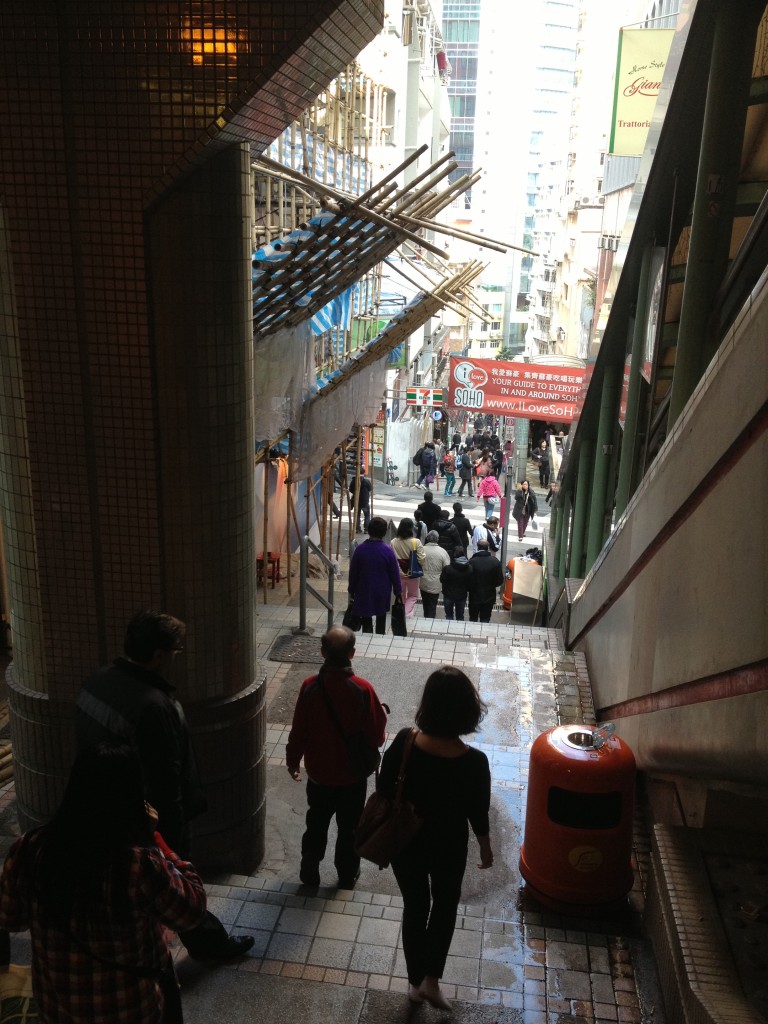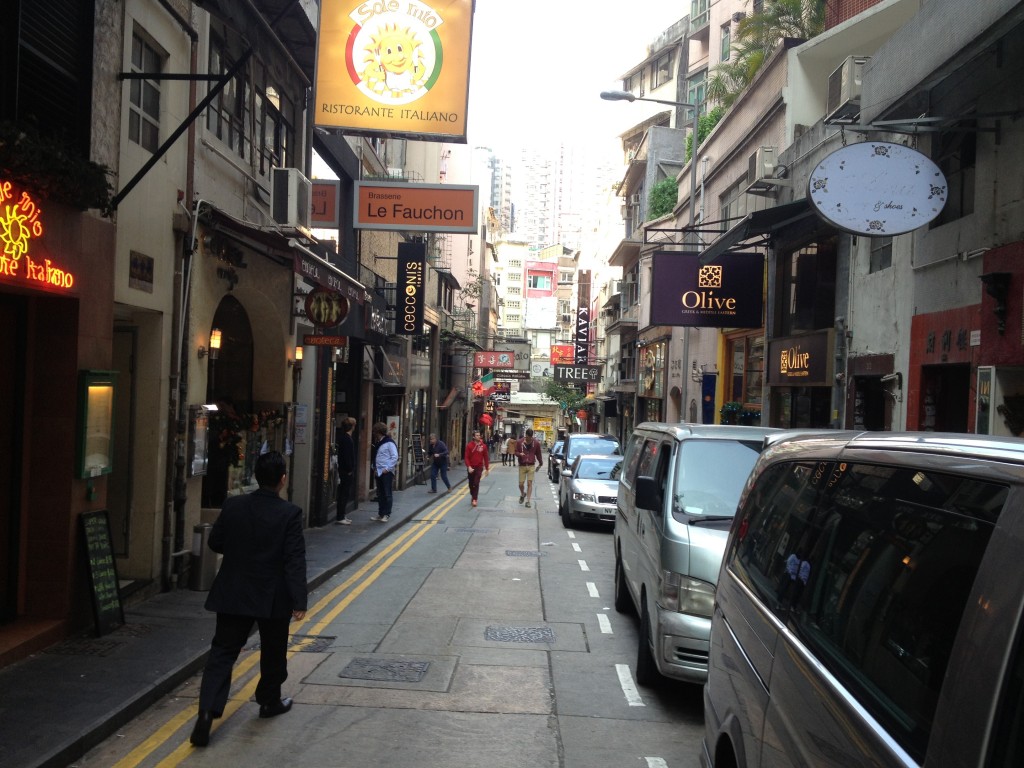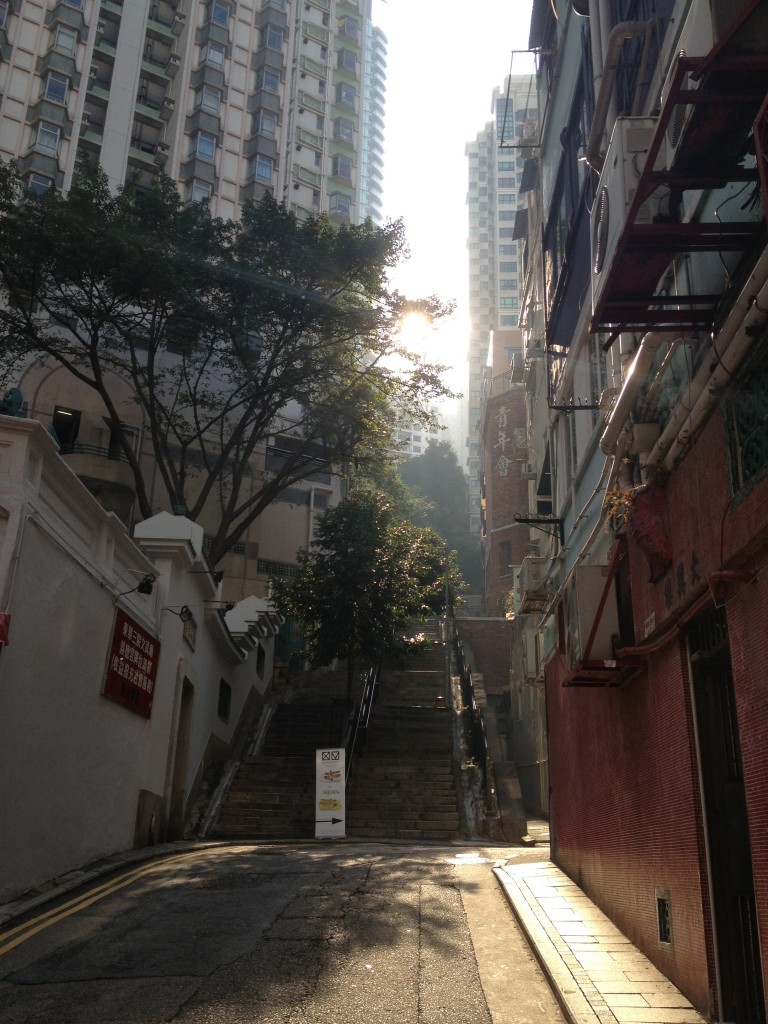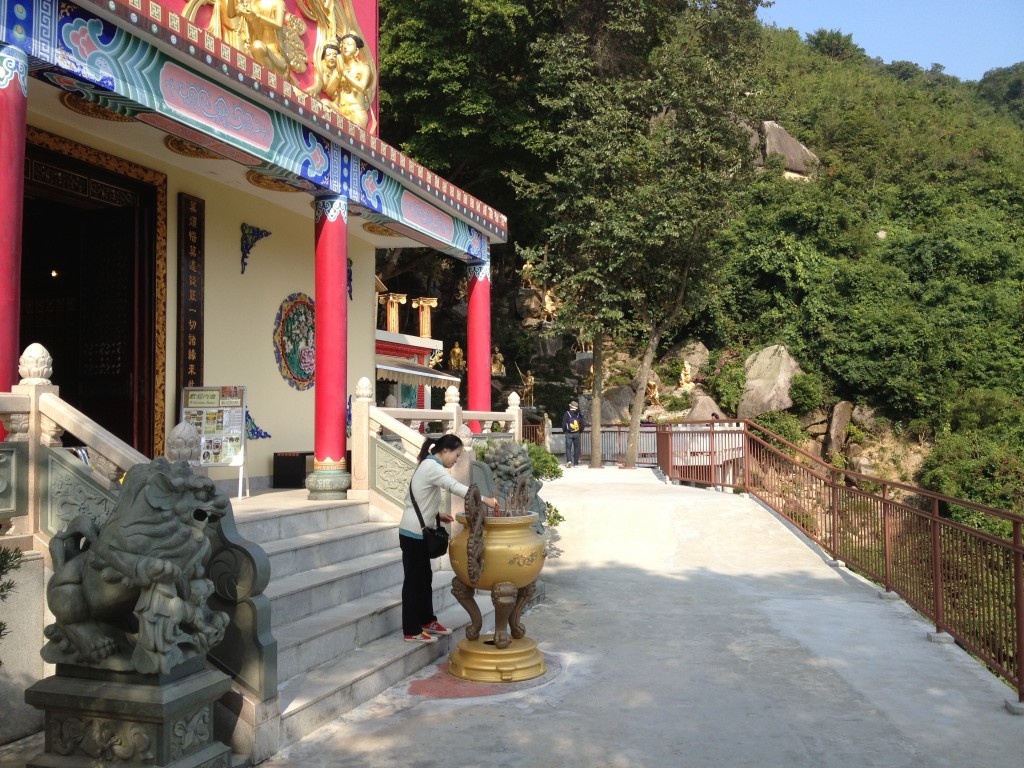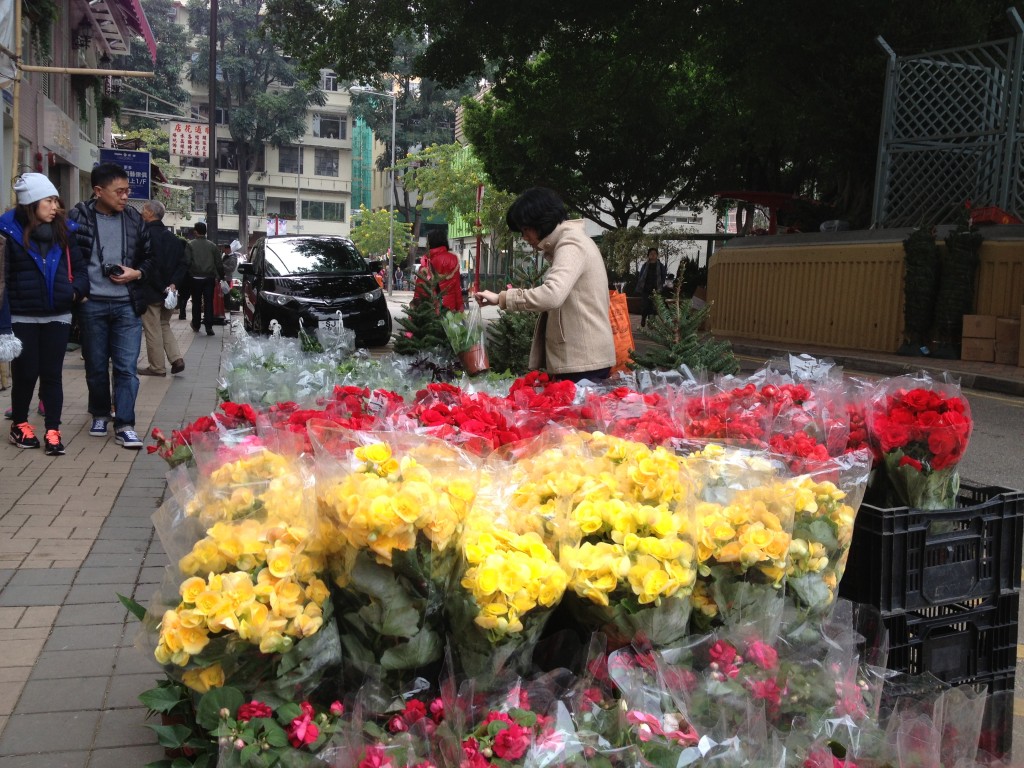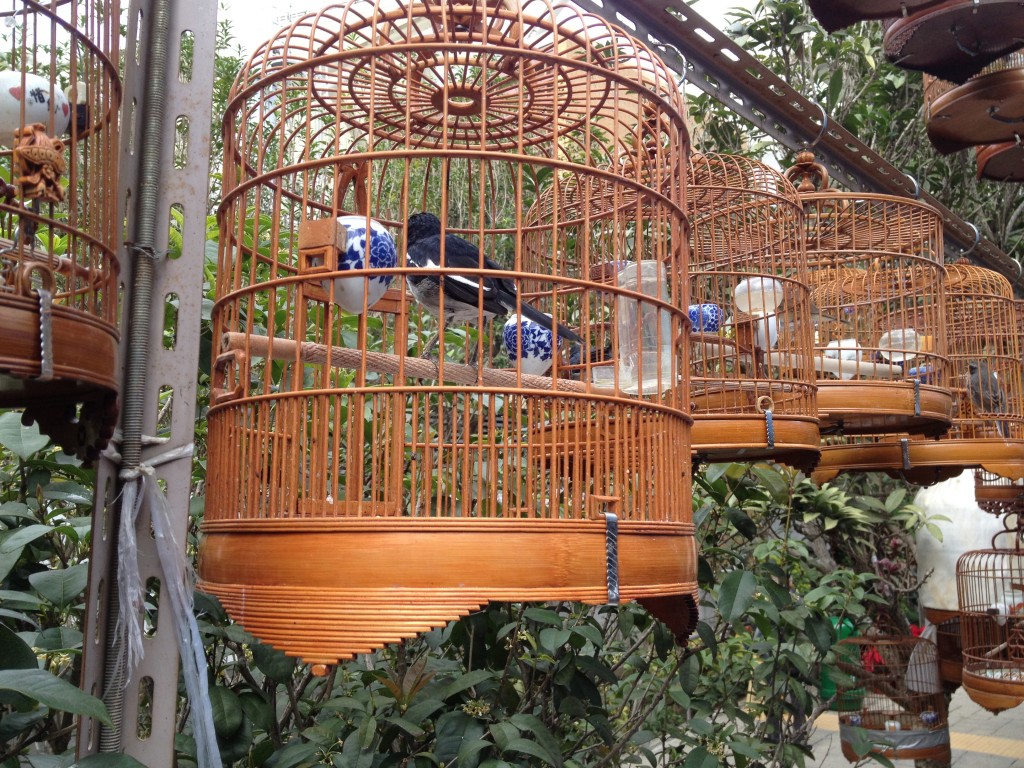Smart Asia Getaways
Discover Asia, the smart way
Three Hong Kong Day Trips Worth Taking and One I’d Skip
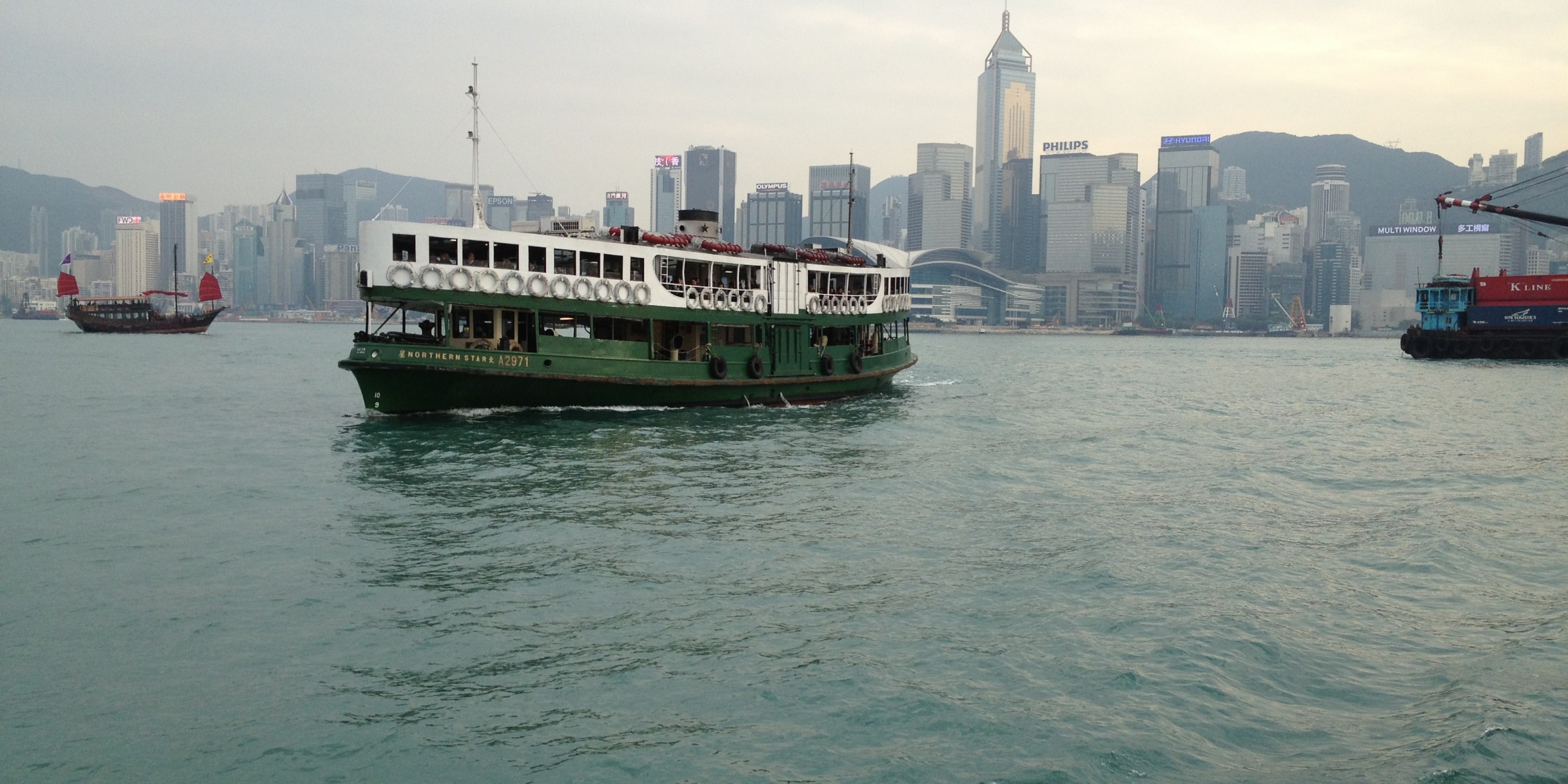
I’ll save you the suspense: skip the Temple Street Night Market.
Sure – go to the neighborhood – the Jordan Street stop on the Red Line. For browsing, people, watching, and getting the “rhythm” of Kowloon, the neighborhood is worth a visit. It’s just that I wouldn’t go out of my way for the market itself, which consists of little more than hundreds-upon-hundreds of booths selling basically the same cheap sundries you can find at wallmart (probably literally the same, when you consider where they’re made), where they won’t force you to haggle in order to pay a less-than-ludicrous price.
Moreover, the best one-shot adventure, in my humble opinion, is the Peak Tram. I’d almost recommend saving that for last just so the scale and spectacle don’t spoil those of the free adventures I’m about to describe.
But that doesn’t negate an abundance of cheap – or free – day journeys on Hong Kong Island and Kowloon.
Soho, Hollywood Road, and The Harbor Ferry
A good introduction to Hong Kong Island is Soho. Beginning a few blocks from the Central subway station on the red line, the city takes a dramatic upward slant into the foothills of Victoria Peak. Two avanues – Hollywood Road near the valley floor and Staunton Road one block up the hill and parallel – traverse the slope from East to West. Approach from above, and a diving staircase connects the crosstown arteries. (As I mention in the public transit article, a lot depends on where you exit the subway.)
Turn West on Staunton Street, and the neighborhood, despite its name, bears closer resemblance to another London haunt – Notting Hill.
This is window-shopping for the more-artistically-than-commercially inclined. You will find brand-names, but you’ll also find small boutique shops and European-style coffee shops, cafes, and wine bars.
A decent place to take a breather is Nan Tei, at G/F, 55 Staunton Street, SOHO, Central, a yakitori joint popular with the bankers who work just blocks away. A modest outlay will get you a lunch set with miso soup, several assorted yakitori skewers, and a lunch box.
Like much of Hong Kong Island, Soho is cosmopolitan – people from all over the world both call the neighborhood home and come to visit.
There’s digital-camera-candy around every corner. If you’re there in mid-late afternoon, train your camera on one of the hillside staircases to your left as you walk West to catch some other-worldly light effects. Oh, and there’s street art.
Hang, browse, eat, drink, and people-watch on Staunton Road, then head south (and also, literally, downward) to Hollywood Road, where the Man Mo Temple – a famous Buddhist shrine (where, in case you’re wondering why there are no photos, photography is prohibited) – and Hollywood Road Park frame rows of art galleries, medicine shops, and furniture design showrooms.
There’s digital-camera-candy around every corner. If you’re there in mid-late afternoon, train your camera on one of the hillside staircases to your left as you walk West to catch some other-worldly light effects. Oh, and there’s street art.
You can continue Westward for miles, past galleries and markets – or double-back on Queens Road West after Hollywood Road joins it – but when you get bored, just follow any of the North/South streets downward to the harbor and hop one of the ferries across for the second of two quintessential Kung-Fu-flick-B-roll pornography opportunities. I recommend the ferry to Tsim Sha Tsui from terminal seven. Just follow the winding river walk back Eastward past the terminals in ascending order. Hong Kong gets one big thing right: beer taps at nearly every ferry terminal and river-walk, on both sides of the harbor. Enjoy a cold-one while you wait for the ferry across to Kowloon, or on the Kowloon side while assuaging your disappointment about the “light show” every evening at 8pm – before calling it a night.
Whether you’re staying in TST – as I recommend – or elsewhere, the ferry docks at the Avenue of Stars (where you can see Jackie Chan’s likeness in bronze, if you like), just steps from the entrance of the Tsim Sha Tsui subway station, from which you can get anywhere quickly.
(I’ll discuss TST in greater detail when I review the Hotel Icon.)
Enjoy a cold-one while you wait for the ferry across to Kowloon, or on the Kowloon side while assuaging your disappointment about the “light show” every evening at 8pm – before calling it a night.
The Ten Thousand Buddhas Monastery
“This is nothing!” Chih-Yu and I remarked as we neared the top of what we believed to be the Ten Thousand Buddhas Monastery, but which turned out to be a private monastery just next-door, which explained the perplexed looks of grieving widows as we horsed around and took silly selfies.
It’s 431 steps to climb to the top of the Ten Thousand Buddhas Monastery hill, and it was 862 for us, after we alighted the mountain, found the proper path, and headed up again – mostly for bragging rights.
Calves burning, we reached the apex, and enjoyed the second best view in all of Hong Kong. (“Meh,” we intoned in unison, mentally comparing it to the Sky Terrace.) Luckily, the view is the least interesting thing about a half-day excursion to the 10kBM, which includes a ride on the Blue Line halfway to Shenzhen and a short walk past a town square, an Ikea, and up a small driveway (then past the first monastery entrance behind the Ikea to the second, unless you’re looking to repeat our mistake). Climbing the stairs is part of it – a view is different when you’ve earned it – as are the beautiful temples once you reach the top. And, yes, there are a ton of Buddhas, lining the path, at the top near the temples, in the temples, in the backyard behind the temples… The place is lousy with Buddhas.
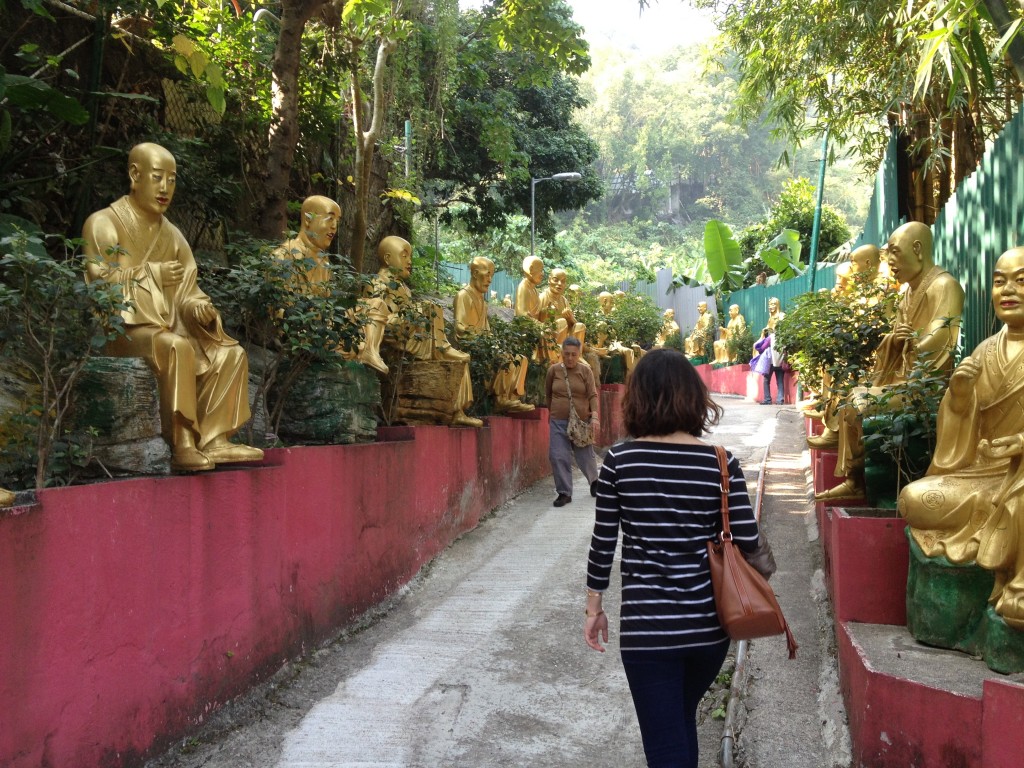 On your way back stop by the dried-fruit-lady’s stand, where you’ll find pretty much every type of fruit you thought could be dried and a great deal it never occured to you could be dried. It’s the perfect antidote for hiking-induced hypoglycemia.
On your way back stop by the dried-fruit-lady’s stand, where you’ll find pretty much every type of fruit you thought could be dried and a great deal it never occured to you could be dried. It’s the perfect antidote for hiking-induced hypoglycemia.
It’s 431 steps to climb to the top of the Monastery hill, and it was 862 for us, after we climbed the wrong mountain and had to try again.
The Yuen Po Street Bird Garden and Mongkok Flower Market
Think of the Flower Market and Bird Garden as the “anti-shopping mall”. For zero dollars – unless you buy a bird or a bouquet – you can go at least one-level-deep in Kowloon.
Flower Market Road borders Mongkok Stadium, where, if I’m not mistaken, Andy Lau’s policeman in Days of Being Wild, worked a beat. To get there, hop off the red line at Prince Edward Road, and follow it eastward for two blocks. Hang a left for one block on Sai Yee Street, and then a right, and you’ll arrive at the beginning of Flower Market Road. This will spoil Sprout Home in Williamsburg for a few months to-come. The two selling points are variety and freshness – flower species you don’t see elsewhere, and fresh-cut – but it bears mentioning that half-a-mile of shop-after-shop probably discourages mailing-it-in. There’s nothing wilted here.
The Yuen Po Street Bird Garden sits behind a regal brick gate atop a ramp at the end of Flower Market Road, and is part dog-park, part bazaar/swap-meet, but it’s pure old-school Hong Kong. Handmade wooden cages house species of tropical bird you didn’t know existed. In crowded booths, proprietors sell live cages, birds, and live grasshoppers in big plastic bags. (“When seed just doesn’t say ‘I love you tweety.'”)
However you feel about McCaws – that they’re dumb house pets, or intelligent creatures we’ve imprisoned – they’re there, in cages, chained to perches, with wingtips clipped, in a more-than-slightly-unsettling rogue’s gallery. Smaller species seem more content with the imprisonment. Either way, a constant procession of onlookers with smart-phones keep them company. It’s not all wind0w-shopping – there’s rampant commerce here. We observed at least three groups of tourists purchasing “gift birds” in bamboo cages in the short time we were there.
None of the above day trips takes you too far out-of-your way, all are easily accessible from the subway without resorting to buses, and without too much walking, and all can be completed in a half-day (though the Soho/Ferry adventure takes slightly longer), leaving time for sampling some of the cuisine we’ll feature in our next installment. Stay tuned…
